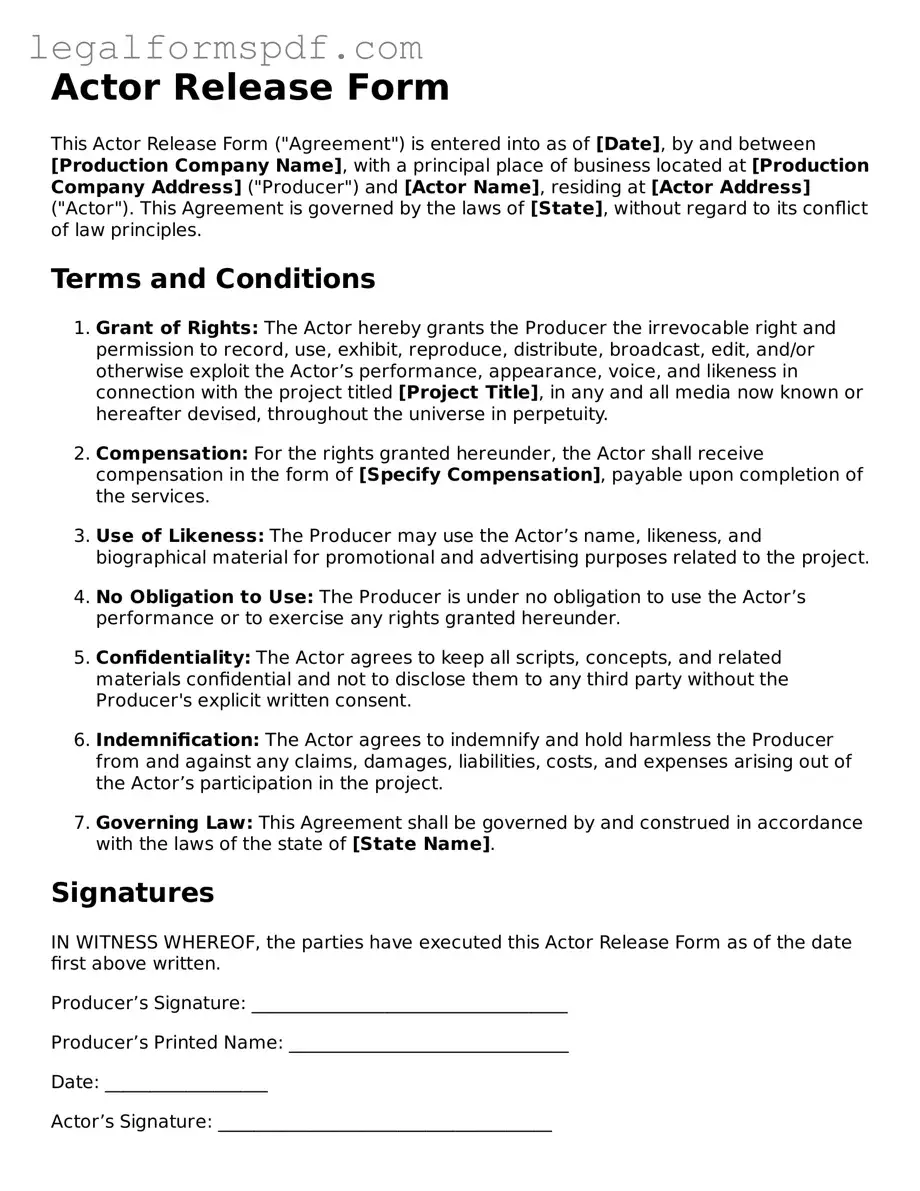The Model Release Form shares similarities with the Actor Release Form primarily in its function to grant permission to use an individual's image or likeness for commercial or promotional purposes. Much like its counterpart, the Model Release Form is a legal document that clearly outlines the rights transferred from the model to the photographer, agency, or any other party. It protects both the rights of the individual by specifying how their image can be used and the rights of the photographer or organization by providing legal clearance to use the images as agreed upon.
The Location Release Form is another document that has a similar purpose to the Actor Release Form, albeit focusing on property rather than people. This form is used to gain permission from property owners to use their location for filming, photography, or any other similar activities. It details the scope of the permission granted, including any restrictions and financial arrangements. Like the Actor Release Form, it is crucial in ensuring that all legal permissions are secured before production begins, minimally limiting potential disputes over the use of the location.
The Copyright Assignment Form, while broader in its application, parallels the Actor Release Form in terms of the transfer of rights. This form is typically used when an individual or entity wishes to transfer the copyright of their work to another party. It clearly lays out the terms of this transfer, including the rights being given up and any compensation for such a transfer. Similar to the Actor Release Form, it serves as a legal agreement that secures the rights for one party to use, modify, or distribute the work as they see fit.
The Non-Disclosure Agreement (NDA) can also bear resemblance to the Actor Release Form in its protective nature, although it focuses on the confidentiality of information rather than rights to use someone's likeness. NDAs are used to protect sensitive information disclosed during transactions or negotiations from being shared with unauthorized parties. Like the Actor Release Form, it establishes a clear legal framework that dictates what can and cannot be done with the provided resources or information, safeguarding the interests of the disclosing party.
The Talent Release Form is practically identical to the Actor Release Form in both purpose and content, with the primary difference often being the context in which they are used. Talent Release Forms are more broadly applicable and can be used for participants in various productions beyond acting, such as in reality TV, game shows, and even certain sporting events. These forms ensure that the producers have the legal right to use the talent's image, voice, and performance, much like Actor Release Forms ascertain clearance for actors' likenesses to be used in films and commercials.
The End User License Agreement (EULA) shares conceptual similarities with the Actor Release Form in the aspect of granting rights or permissions, though it pertains to software rather than a person's image or performance. EULAs are legal contracts between the developer or publisher of software and the user, laying down the terms under which the software can be used. While focusing on software usage rights, EULAs, like Actor Release Forms, lay out detailed permissions and restrictions, establishing a legally binding agreement between parties concerning the use of the product or content.
